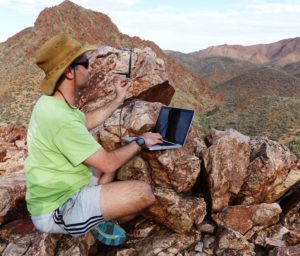
An emergency mobile phone system developed at Flinders University has won a prestigious international award for post-disaster relief work in the Pacific.
Foreign Minister Julie Bishop has announced that Dr Paul Gardner-Stephen’s smartphone communications system that can operate without cellphone towers is one of five winners in the Pacific Humanitarian Challenge.
The Challenge, which attracted 129 applications from 20 countries, aims to acknowledge and develop outstanding efforts to improve faster, cheaper and effective aid responses to Pacific nations.
In collaboration with New Zealand Red Cross and based on the Serval Project at Flinders, the acclaimed free Android mobile phone system called Serval Mesh provides cellular-like communications in the absence of cellular signal or internet.
Dr Gardner-Stephen says the $279,000 prize will be put to good use.
“The award funding will be used to make technical improvements so that the Serval Mesh is even easier to use,” Dr Gardner-Stephen says.
“In conjunction with the NZ Red Cross, and with support from our collaborators in the German NICER project and trials in the Arkaroola Wilderness Sanctuary in South Australia’s Outback, we will extend our testing to a pilot in the Pacific, ahead of the first large-scale rollout of Serval in a post-disaster situation in the Pacific,” he says.
About the Serval project
Serval Mesh is a software suite enabling off-the-shelf Android phones to perform infrastructure-free, peer-to-peer voice, text and data services. To improve the range of the Mesh communications, the software has also been integrated with optional, pocket-sized inexpensive radio hardware units, called Serval Mesh Extenders.
The Serval Mesh software is free to download and its mesh network is simple and inexpensive to deploy, which is important when responding to disasters.
For several years, the New Zealand Red Cross Emergency Telecommunications and Disaster Response Capability Unit has worked closely with the Flinders-led Serval Project team to ensure Serval Mesh is tailored towards rapid, secure and inexpensive post-disaster deployment in the Pacific.

